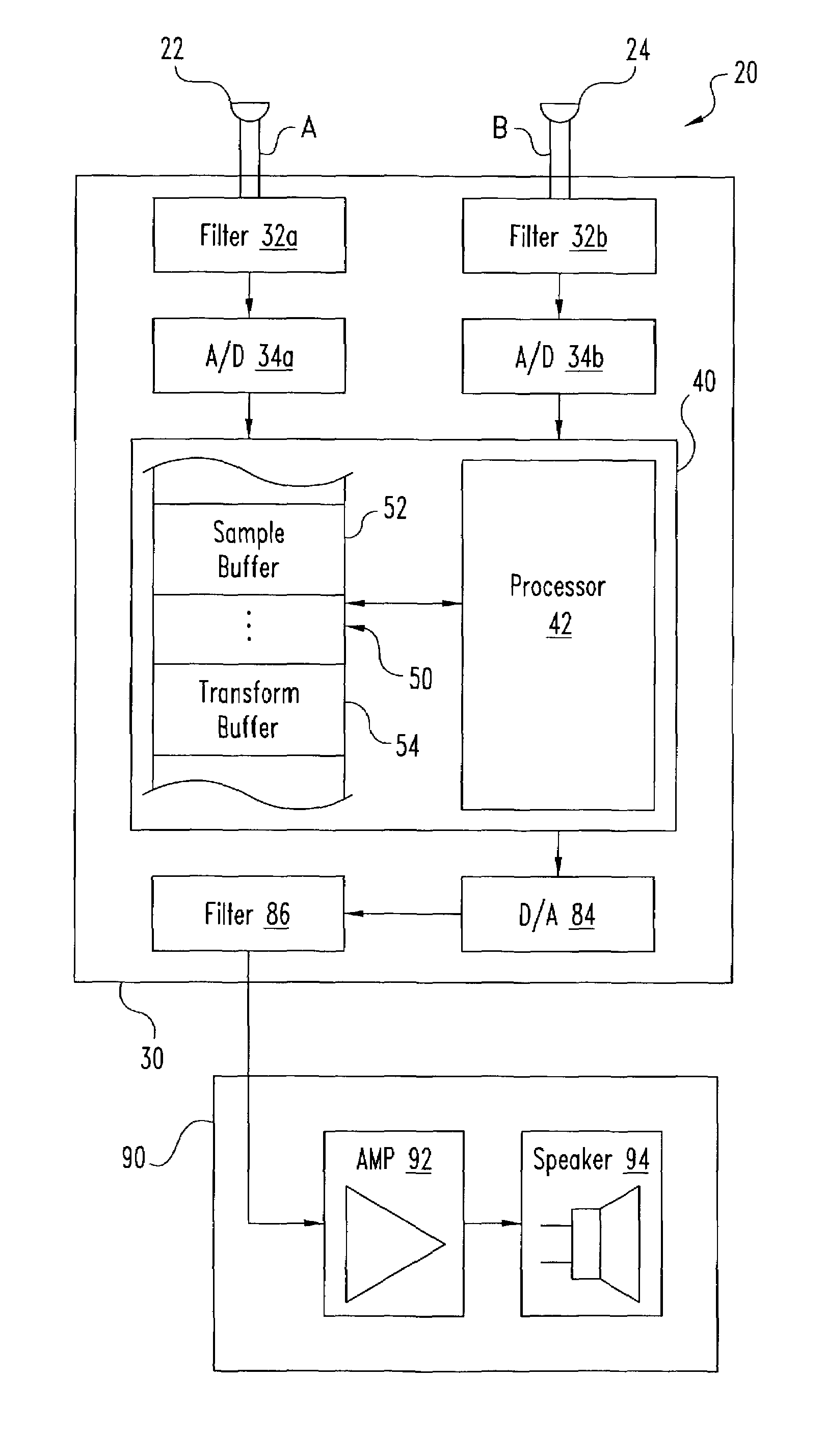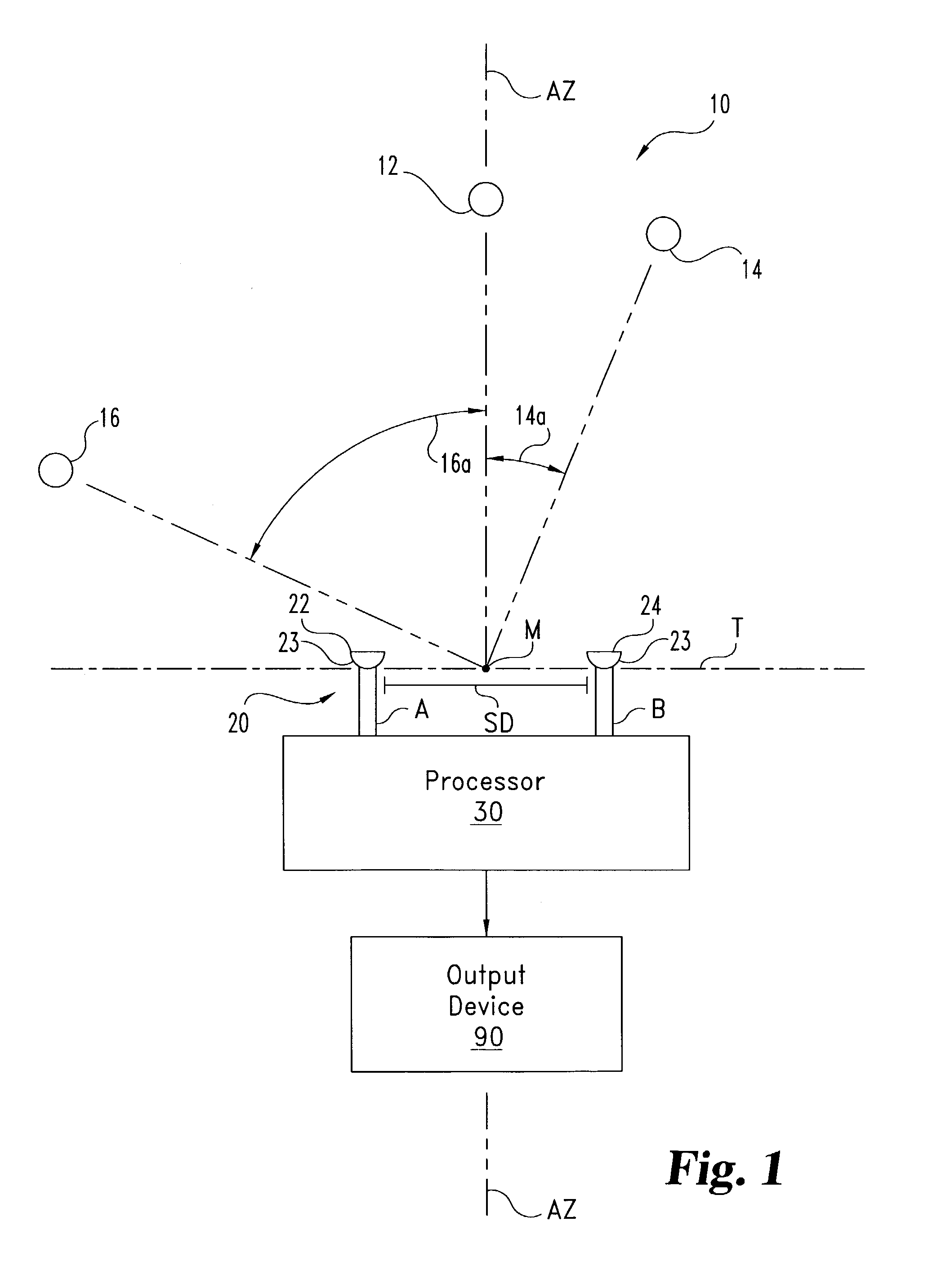Systems and methods for interference-suppression with directional sensing patterns
a technology of directional sensing pattern and interference suppression, applied in the direction of electrical transducers, electrical transducers, transducer types, etc., can solve the problems of difficult extraction of desired signals in the presence of interfering signals, devices that do not permit selective amplification of desired sounds, and even more severe problems, so as to reduce the variance of output signals
- Summary
- Abstract
- Description
- Claims
- Application Information
AI Technical Summary
Benefits of technology
Problems solved by technology
Method used
Image
Examples
Embodiment Construction
[0024]While the present invention can take many different forms, for the purpose of promoting an understanding of the principles of the invention, reference will now be made to the embodiments illustrated in the drawings and specific language will be used to describe the same. It will nevertheless be understood that no limitation of the scope of the invention is thereby intended. Any alterations and further modifications of the described embodiments, and any further applications of the principles of the invention as described herein are contemplated as would normally occur to one skilled in the art to which the invention relates.
[0025]FIG. 1 illustrates an acoustic signal processing system 10 of one embodiment of the present invention. System 10 is configured to extract a desired acoustic excitation from acoustic source 12 in the presence of interference or noise from other sources, such as acoustic sources 14, 16. System 10 includes acoustic sensor array 20. For the example illustr...
PUM
 Login to View More
Login to View More Abstract
Description
Claims
Application Information
 Login to View More
Login to View More - R&D
- Intellectual Property
- Life Sciences
- Materials
- Tech Scout
- Unparalleled Data Quality
- Higher Quality Content
- 60% Fewer Hallucinations
Browse by: Latest US Patents, China's latest patents, Technical Efficacy Thesaurus, Application Domain, Technology Topic, Popular Technical Reports.
© 2025 PatSnap. All rights reserved.Legal|Privacy policy|Modern Slavery Act Transparency Statement|Sitemap|About US| Contact US: help@patsnap.com



